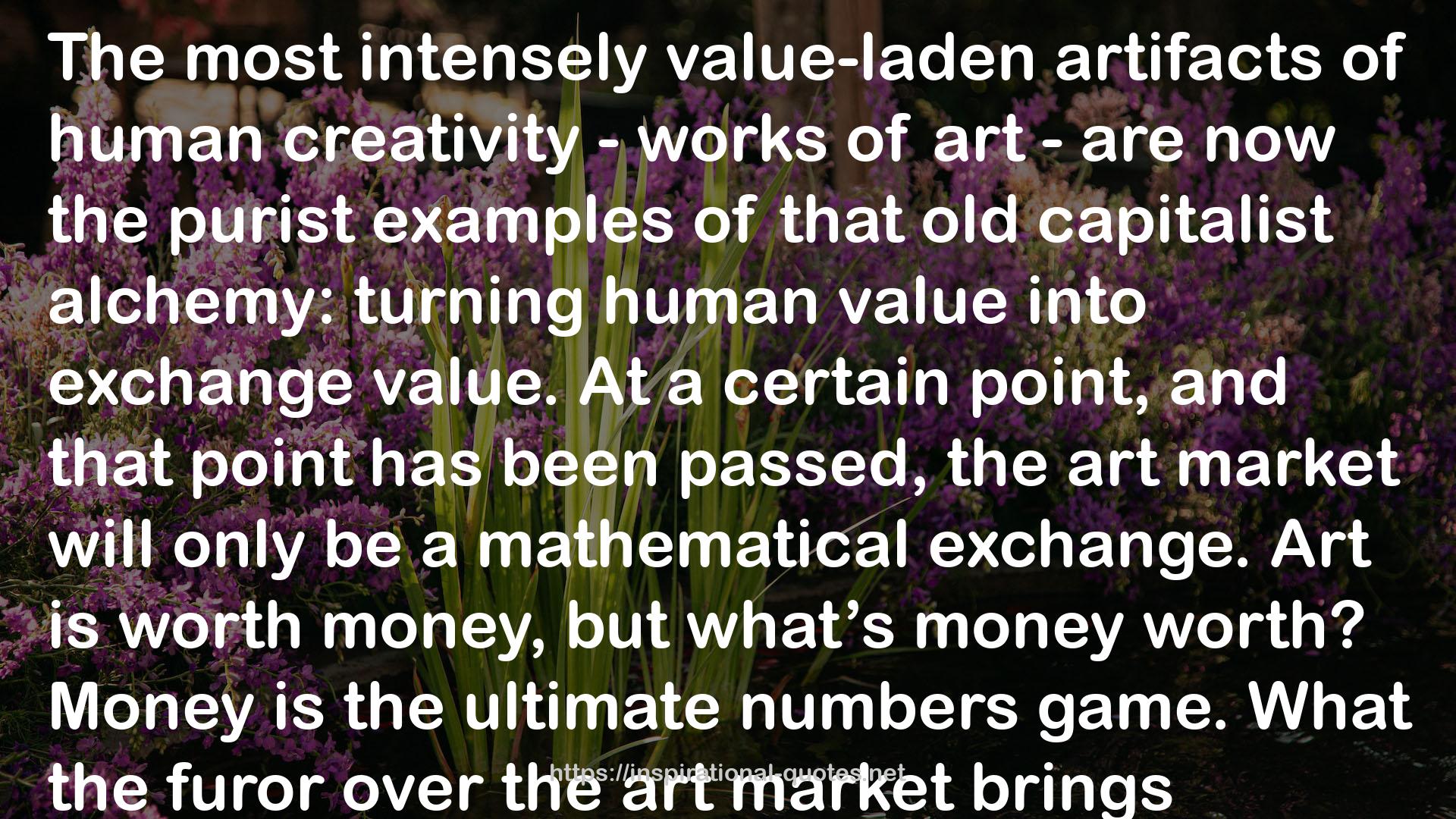" The most intensely value-laden artifacts of human creativity - works of art - are now the purist examples of that old capitalist alchemy: turning human value into exchange value. At a certain point, and that point has been passed, the art market will only be a mathematical exchange. Art is worth money, but what’s money worth? Money is the ultimate numbers game. What the furor over the art market brings tantalizingly close to the surface is the fact that it is not just the value of art that is dependant on a shared fantasy, it is also money itself.
Warhol is not the name of an artist, it is the name of a currency. “Warhol” is a big number because its denomination (soup cans, Brillo box simulacrums, etc.) is presumed to be stable and growing. But it can inflate or deflate like any stock or bond or national currency. Jeff Koons is also a currency but less stable. The only thing that really changes hands are the numbers that are for some reason associated with these opaque talismans called “artworks.” The billionaire buyers of these works have been reduced to South sea natives who insist on the magical properties of certain queer objects - a cornhusk doll with pearls for eyes and a colourful ribbon about its head - but are unable to say why they are so important or why their world would collapse without them. Investors in the art market need to fear bot only the economic boogies of bubbles and ponzi schemes but also that dreaded moment when they look at one another in panic and say, “What were we thinking? What is this stuff? What could have possessed us to say that a glass balloon dog is worth thens of millions? Sell! Sell! "
― Curtis White , We, Robots: Staying Human in the Age of Big Data
